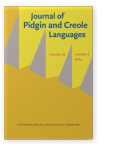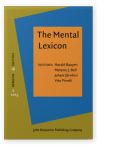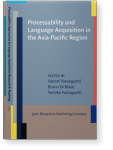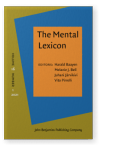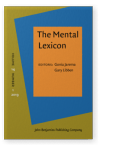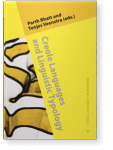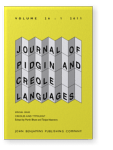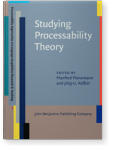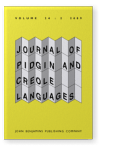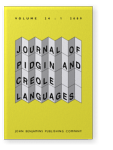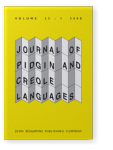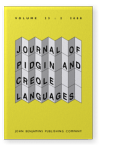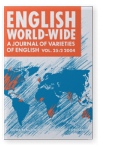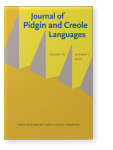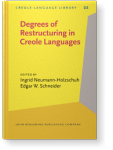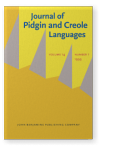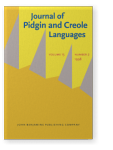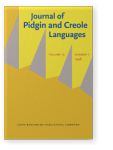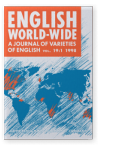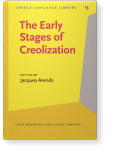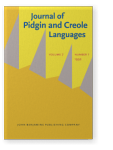Ingo Plag
List of John Benjamins publications for which Ingo Plag plays a role.
Journals
The Mental Lexicon (ML)
Edited by Harald Baayen, Melanie J. Bell, Juhani Järvikivi and Vito Pirrelli
ISSN 1871-1340 | E-ISSN 1871-1375
Book series
2023 German nominal number interpretation in an impaired mental lexicon: A naive discriminative learning perspective The Mental Lexicon 18:3, pp. 417–445 | Article
There is an ongoing debate on how speakers and listeners process and interpret information in a morphological system that is very complex and not very transparent. A well-known test case is the German nominal number system. In this paper we employ discriminative learning (e.g., Ramscar &… read more
2021 Phonetic reduction and paradigm uniformity effects in spontaneous speech The Mental Lexicon 16:1, pp. 165–198 | Article
Recent work on the acoustic properties of complex words has found that morphological information may influence the phonetic properties of words, e.g. acoustic duration. Paradigm uniformity has been proposed as one mechanism that may cause such effects. In a recent experimental study Seyfarth… read more
2019 Spelling errors in English derivational suffixes reflect morphological boundary strength: A case study The Mental Lexicon 14:1, pp. 1–36 | Article
To what extent do speakers decompose morphologically complex words, such as segmentable, into their morphological constituents? In this article, we argue that spelling errors in English affixes reflect morphological boundary strength and degrees of segmentability. In support of this argument, we… read more
2013 Creoles are typologically distinct from non-creoles Creole Languages and Linguistic Typology, Bhatt, Parth and Tonjes Veenstra (eds.), pp. 9–45 | Article
In creolist circles, there has been a long-standing debate whether creoles differ structurally from non-creole languages and thus would form a special class of languages with specific typological properties. This debate about the typological status of creole languages has severely suffered from a… read more
2013 Creolization and admixture: Typology, feature pools, and second language acquisition Creole Languages and Linguistic Typology, Bhatt, Parth and Tonjes Veenstra (eds.), pp. 141–162 | Article
Proponents of a ‘feature pool’ approach to creolization (e.g. Mufwene 2001, Aboh & Ansaldo 2006) have claimed that the emergence of the new grammar is driven by the syntax-discourse prominence, markedness, and frequency of available features, with typological similarity or dissimilarity of the… read more
2011 Creoles are typologically distinct from non-creoles Creoles and Typology, Bhatt, Parth and Tonjes Veenstra (eds.), pp. 5–42 | Article
In creolist circles, there has been a a long-standing debate whether creoles differ structurally from non-creole languages and thus would form a special class of languages with specific typological properties. This debate about the typological status of creole languages has severely suffered from… read more
2011 Creolization and admixture: Typology, feature pools, and second language acquisition Creoles and Typology, Bhatt, Parth and Tonjes Veenstra (eds.), pp. 89–110 | Article
Proponents of a ‘feature pool’ approach to creolization (e.g. Mufwene 2001, Aboh & Ansaldo 2006) have claimed that the emergence of the new grammar is driven by the syntax-discourse prominence, markedness, and frequency of available features, with typological similarity or dissimilarity of the… read more
2011 Pidgins and creoles Studying Processability Theory: An Introductory Textbook, Pienemann, Manfred and Jörg-U. Keßler (eds.), pp. 106–120 | Article
This chapter discusses pidgin and creole languages, that is languages that have emerged in contact situations in which second language acquisition has played a prominent role. It is shown that the creation of many of the morphosyntactic structures we find in these contact languages can be… read more
2009 Creoles as interlanguages: Word-formation Journal of Pidgin and Creole Languages 24:2, pp. 339–362 | Article
2009 Creoles as interlanguages: Phonology Journal of Pidgin and Creole Languages 24:1, pp. 119–138 | Article
2008 Creoles as interlanguages: Inflectional morphology Journal of Pidgin and Creole Languages 23:1, pp. 114–135 | Article
2008 Creoles as interlanguages: Syntactic structures Journal of Pidgin and Creole Languages 23:2, pp. 307–328 | Article
2001 The nature of derivational morphology in creoles and non-creoles Journal of Pidgin and Creole Languages 16:1, pp. 153–160 | Miscellaneous
2000 Phonological restructuring in creole: The development of paragoge in Sranan Degrees of Restructuring in Creole Languages, Neumann-Holzschuh, Ingrid and Edgar W. Schneider (eds.), pp. 309–336 | Article
1998 Ingo Plag Journal of Pidgin and Creole Languages 13:1, pp. 210–212 | Miscellaneous
1998 Review of Schneider (1996): Focus on the USA English World-Wide 19:1, pp. 129–132 | Review
1996 The Emergence of taki as a Complementizer in Sranan: On Substrate Influence, Universals, and Gradual Creolization The Early Stages of Creolization, Arends, Jacques (ed.), pp. 113–148 | Article
